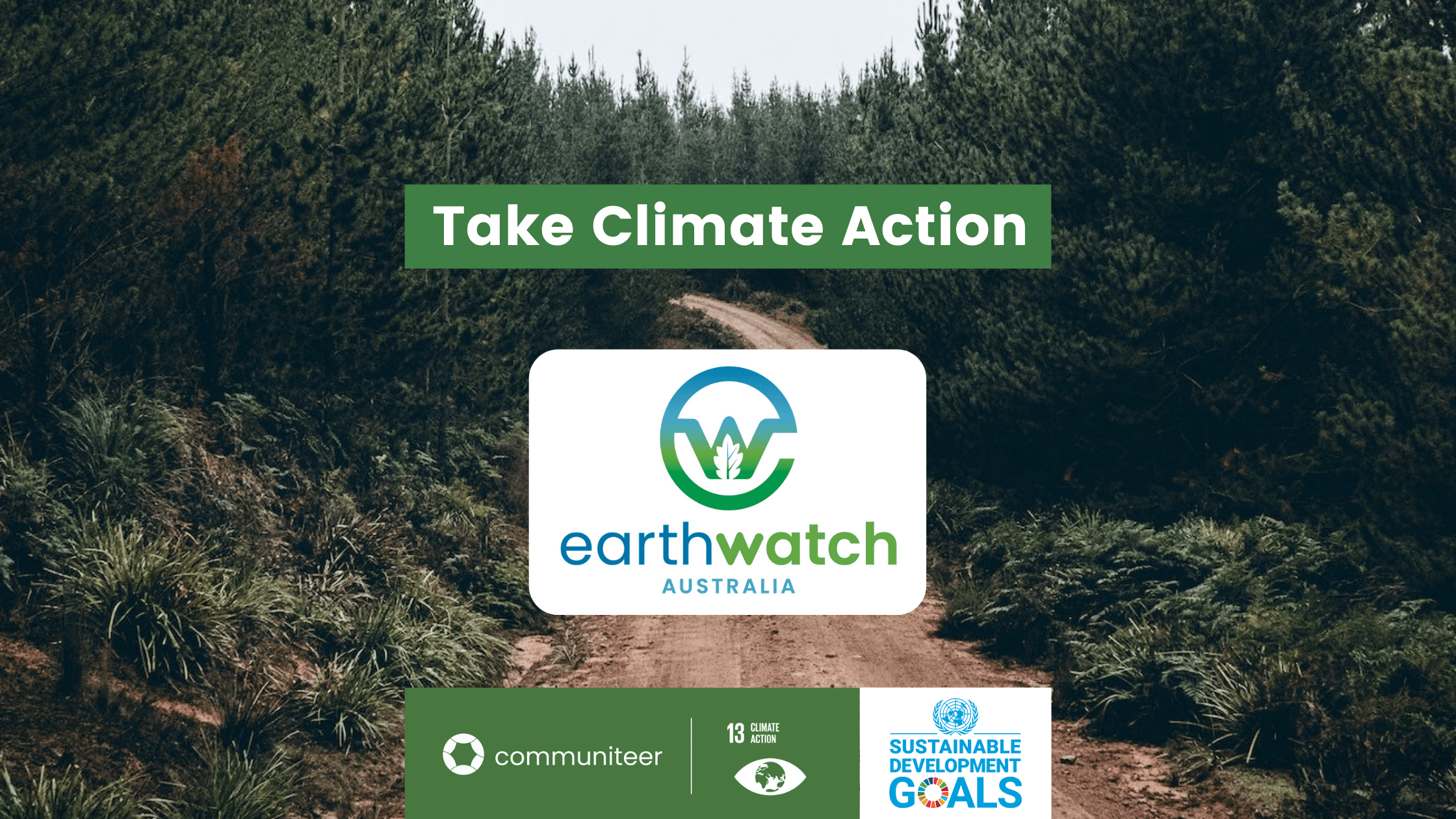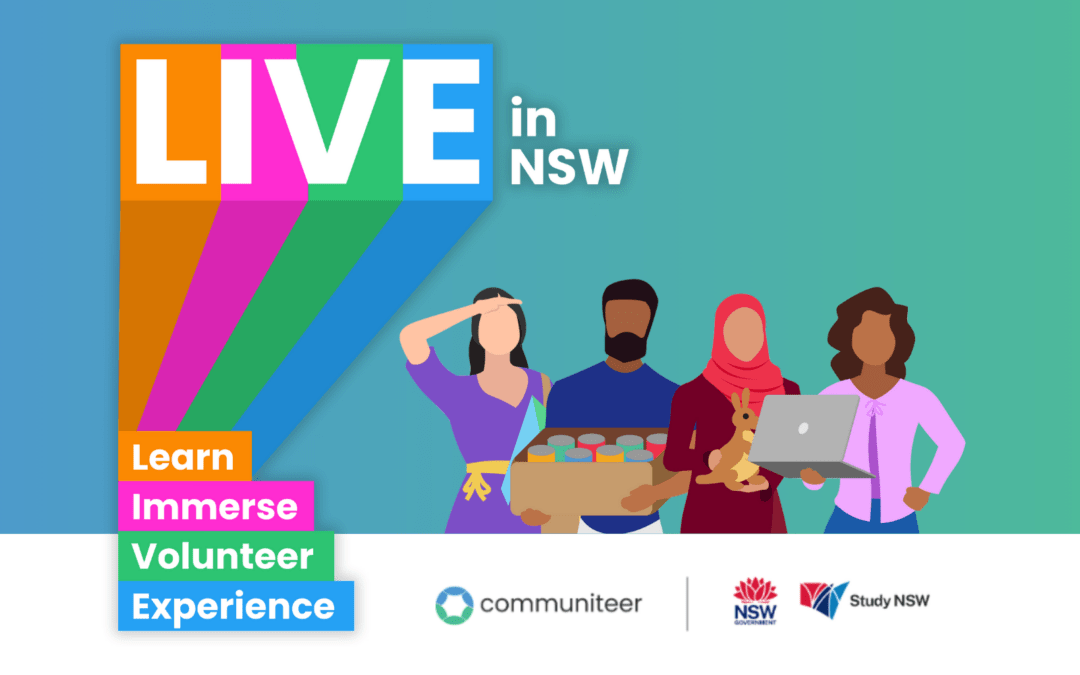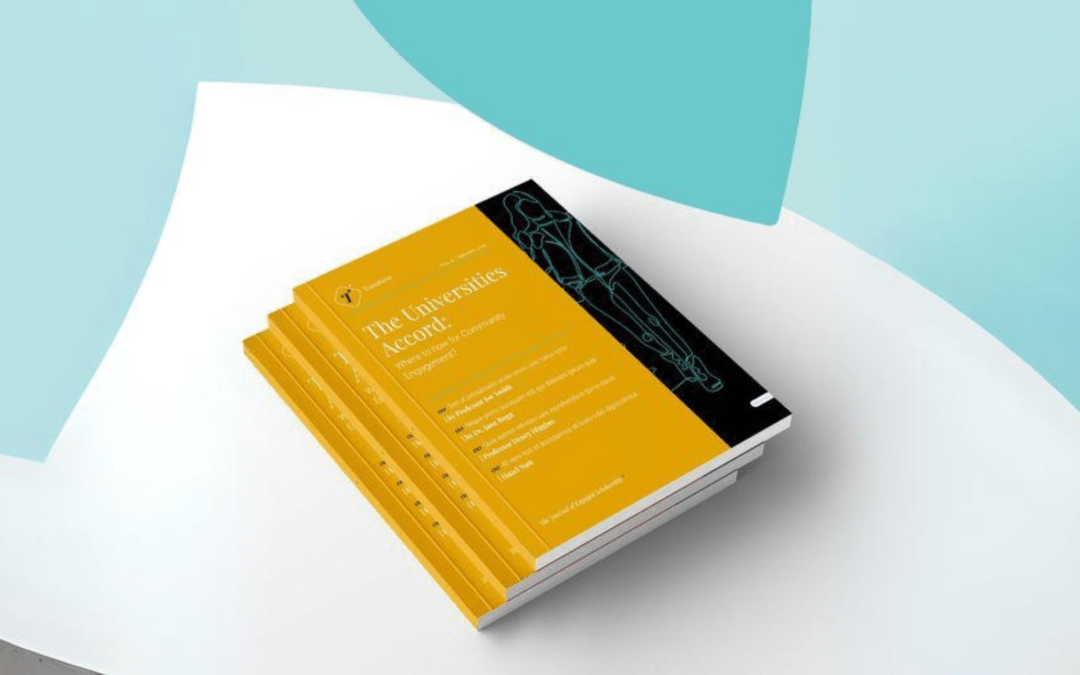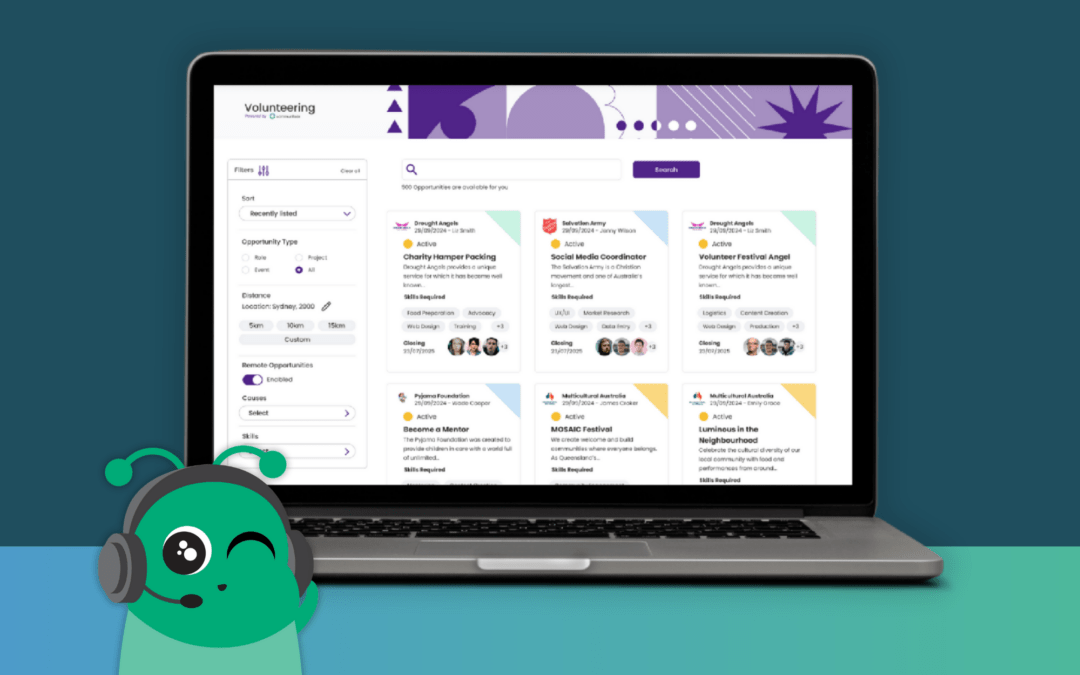Earthwatch Institute Australia is passionate about empowering people to take action in key areas where we can have the most impact. They keep ahead of climate change, save the reef and oceans, restore our iconic landscapes and protect our unique wildlife.
As part of our Take Climate Action campaign, Communiteer is highlighting the stories of some of our not-for-profit partners.
Jock Mackenzie, Earthwatch’s Wetlands Program Manager and the Founder of Mangrovewatch, shares with us how they are creating a more sustainable future.
Hi Jock! The Sustainable Development Goals (SDGs) are at the core of Earthwatch’s activities and impact. What are they and what does Earthwatch do to achieve them?
The SDGs are 17 are a blueprint to achieve a better and more sustainable future for all. As these goals are global, no one organisation or sector can work on them alone. We need to work together to save the natural world and achieve these goals faster. Earthwatch Institute Australia’s role is to help corporate, government, and community organisations achieve their aspirations in progressing towards the SDGs. They that are linked to water, land and climate action. This can be whether they’re looking at reducing carbon footprint, offsetting carbon emissions or increasing local livelihoods and locally sustainable fisheries whilst protecting waterways.
A lot of organisations have the SDGs listed on their websites or sustainability pages, but the pathway to achieving their goals are not so clear. Therefore, Earthwatch delivers the action and engagement to get a clearer pathway to achieving these goals. We provide hard and tangible ways so they can create behaviour change within their organisation.
Tell us about your role at Earthwatch.
I’m the Wetlands Program Manager at Earthwatch. I also run an organisation called MangroveWatch. It is a community science partnership that engages people in mangrove monitoring and conservation around the world. Mangroves are the often understated superstars of our coastal ecosystems and often get overlooked. They’re also climate change heroes because they’re excellent at capturing carbon. Did you know mangroves capture five times more carbon than any other forest ecosystems, and 50 times faster?
Unlike other systems where carbon gets released back into the atmosphere, mangroves capture carbon and store them underground.
And mangroves are not just important for carbon capture. Most of the seafood you eat depends on mangroves for its livelihood. If you’ve eaten a prawn, fish or crabs recently in a tropical area, it’s probably had a part of its life depending on mangroves! Mangroves also provide a natural buffer between the land and the sea. They filter water coming from catchments, take out nutrients and sediments, and protect nearby habitats like seagrass and coral reefs.
And why is it important to engage people directly with mangroves?
The programs I work on are about understanding carbon footprint. It’s about getting people out into these environments so they can see how the carbon capture storage process works and how they’re measured. It makes people realise how valuable our environments are.
At Earthwatch Institute Australia, getting people connected to the issue is important, and this includes being there and measuring the trees or the mangroves and getting your feet muddy. I think most people know the mangroves are there, but no one goes into them, so by taking people out there, I think people’s minds are blown.
What is the biggest challenge to taking climate action?
The biggest challenge is that whilst a lot of people are aware climate change is an issue, many people feel helpless. Maybe it’s someone else’s problem, or they’re not sure it directly impacts them. If you live in a big city, you’re not seeing those effects that are experienced in the developing world.
So I think the best way to tackle climate change is through education and information. The science is clear that climate change is happening. What is needed now is the shift in community behaviour, perceptions and attitudes towards climate change. The more people we can give a direct experience to in a habitat that’s both threatened by climate change and crucial to preventing it, the better we’re going to be. Each person you take out there has their social networks that they can have a conversation with. You get a much broader reach than writing a scientific publication that only the scientists read. These personal connections are what’s going to make a difference.
How did the COVID-19 pandemic change how people see nature and the natural world?
Lockdowns have made people focus on their backyards a lot more. People have a greater appreciation for their local environments and the need to protect them. Social media has definitely had an uptake in observations of litter and waterways. People saying, “Oh, why are our waterways dirty?” Possibly because they’ve been going out for walks out there, whereas before they would’ve been in their busy lives. The pandemic has allowed us to take a step back, look at our backyard. We appreciate the animals and the biodiversity within our urban and peri-urban areas.
That’s the same with mangroves. Most tropical cities around the world have mangroves within the city environment, with boardwalks and pathways along these habitats. I’ve set up a program on iNaturalist, which captures mangrove and saltmarsh plant observations. Throughout the pandemic, there was definitely an increase in people making observations of the plants and animals they saw in those habitats.
I think this is indicative of that focus on the backyard and being more aware of your local environment. Then from that connection to the environment, it creates a few more local environmental ‘stewards’ that are more likely to pose the question to their local government official or state representative saying: “How can we manage this better?”
And that’s what’s most important for us at Earthwatch. It’s not just about the science, it’s about getting people from a range of sectors to engage in the science so they can take that back to their own lives and make change, whatever that means to them.
Thank you to Earthwatch Institute Australia for your contribution to our Take Climate Action campaign.
Find out how Communiteer can support your organisation tackle climate change here!




